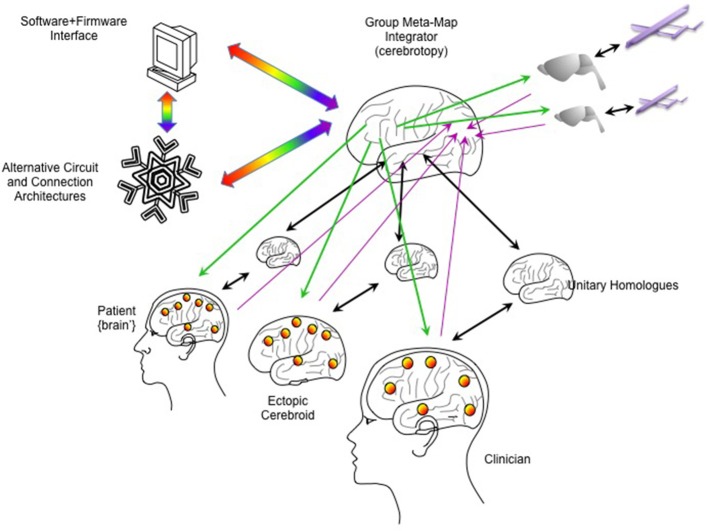Figure 6.
Integrating multiple emulations. Multiple whole brain emulations can be linked together. In this scheme, the patient is linked reciprocally to a homologous emulation (as in Figure 5). An ectopic cerebroid (an organoid construct), itself instrumented with sensor/actuator interfaces, could be implanted into the patient, and could have its own dedicated homologous emulation. A clinician or therapist could guide calibration and rehabilitation through their own BCI interfaces and dedicated homologous. External robotics, such as semi-autonomous drones, could have simpler emulations (here shown as a model on a rodent brain). To coordinate all these emulations, a higher-order “meta-emulation” or “group meta-map integrator” could be forged with input/output connectivity based on principles of how single brains integrate information. Lavender arrows indicate inputs streaming into the “sensory” areas of the integrator, while green arrows indicate outputs streaming from the “motor” areas. Unitary homologs are reciprocally linked to “ventral what stream” temporal cortices, indicated by black arrows. Rainbow arrows indicate connectivity to software/firmware to mediate computer resource use and to explore novel computational architectures.

